english ivy dying in Buckhead
Long time ground cover of english ivy in Buckhead where the leaves are turning brown and the ivy is dying.
Appears to only affect areas not in the shade under trees.
Even in the drought of past years the ivy survived.
Would this be a fungus ? lack of water?
Has anyone else experienced this problem
Comments (23)
Iris GW
13 years agoI'd say you are incredibly lucky at this point. Many people would pay to get rid of their ivy and yours is taking itself out!
Normally it is hard to kill even with herbicide, but have you had any lawn treatments lately?
ladywindsurfer
13 years agoThe only disease that I have ever experienced, that kills English Ivy (Hedera helix), is Anthracnose.
It is identified by stems that turn black, beginning at the roots and rapidly traveling up the stems into the leaves.But, your description of the dying Ivy, does not indicate that is the problem. If present in the soil, it would attack plants in the shade, as well as those in sunlight.
There are several other types of fungi and bacterium that affects ground cover plants, including Ivy. Some of those become active when plants are under stress. Lack of moisture and exposure to direct sunlight can cause plants to close their stomata and enter a Photorespiration cycle, where the energy process is reversed and they use Oxygen and produce Carbon Dioxide (CO2).
In such a weakened state, it is now susceptible to any and all soil borne fungi, viruses and bacterium.If you are in one of those "Death Valley" zones, like I am, this year has been worse than any of the official drought years. I've received only a total of ¾" of rain during the past 2½ months and it came in about 4 or 5 very brief showers. This weekend's forecasted rainfall only amounted to a trace.
Hedera helix is a tough plant to kill, so it will likely return to full vigor when enough moisture is reapplied!
Related Professionals
Norfolk Landscape Architects & Landscape Designers · Beachwood Landscape Architects & Landscape Designers · Camp Verde Landscape Contractors · Clayton Landscape Contractors · Indio Landscape Contractors · Webster Groves Landscape Contractors · Whitehall Landscape Contractors · Silver Firs Landscape Contractors · Clermont Fence Contractors · Bellmawr Fence Contractors · Centereach Fence Contractors · Columbia Fence Contractors · Glenview Fence Contractors · Skokie Fence Contractors · Denver Window Contractorsjay_7bsc
13 years agoIt sounds like drought stress; however, is ivy negatively affected by pet urine? I would hate to think that one's neighbors could be so thoughtless as to encourage Rover or FiFi to pee on their neighbor's horticulture.
georgia-rose
13 years agoPet owners in my neighborhood, are of the stated opinion that their Fido, FiFi. Rover, etcetra, can use any place they choose to answer nature's call.
I suspect they enjoy seeing the beasts spraying a neighbor's prized shrubbery, flower beds or anything that looks more attractive than what they have.I have a large dead spot in a mound of English Ivy around my mailbox, where a dogwalker allowed their pooch to use it for a urine deposit.
The urine contains a high concentration of ammonia and unless diluted quickly, will defoliate and often kill a plant.
I once had a section of my garden, where nothing would grow, because a neighbor's canines (3) used it for daily deposits.
Repeated complaints fell on deaf ears, until a Judge imposed a hefty fine and ordered the pooches confined to the owners property, under threat of larger fines/confiscation, if ignored. My property has since been reclaimed.brandon7 TN_zone7
13 years agoBTW, for anyone not familiar with it, true English ivy (Hedera helix) is a Category 1 invasive in GA and should be avoided because of it's severe damage to local ecosystems. I've provided a link to the Georgia Exotic Pest Plant Council website below.
In case anyone subscribes to Horticulture Magazine, a recent article (about 3 months ago) attempted to say Hedera helix was not invasive and had been confused with other species, but they soon received multiple correction requests by all the experts and placed one of the responses in their letters section as a retraction. This plant is slightly better than kudzu, but not by much in some areas.
Here is a link that might be useful: GA-EPPC Exotic Invasives Plant List
jay_7bsc
13 years agoOh, please. Invasive, invasive, invasive.
Look around you. English ivy is one of the most beautiful evergreen vines that can be used in North Georgia, Middle Georgia, and South Georgia, for that matter. It is up to the gardener to control its growth.
Look around Druid Hills at the lovely, controlled use of English ivy.
girlgroupgirl
13 years agoIt's INVASIVE! There are very very few appropriate uses of Ivy I have seen - and it is totally controlled so that it can not seed or spread. The Sandy Springs emergency animal clinic is one of the few places I like Ivy - it's totally surrounded in concrete.
English Ivy's beauty is in the eye of the beholder, I guess. I find it ugly. My neighbors do not control theirs, they don't care - it is bringing down their trees into my yard, it is escaping 10-12 feet into my yard. It costs me a hefty expense to keep it at bay.
The gardener who plants it now may not be the gardener (or non-gardening) who "takes care of it" then. Avoiding invasive plant material is the responsible thing to do for ecology and for the future.
I find the landscaping in Druid Hills incredibly samey and boring. There are so many more beautiful plants that could be creatively used instead of the same old same old meatballs, ivy and grass. Plants that are gentle to the earth and require little in the way of water, power/gas machines to keep them in place or herbicides to kill unwanted growth.brandon7 TN_zone7
13 years agoI don't think Jay realizes what the word invasive means.
Otherwise, his response reads something like...
"Oh, please. toxic , toxic , toxic .
Look around you. Industrial toxic waste is one of the most beautiful chemicals that can be dumped in North Georgia, Middle Georgia, and South Georgia, for that matter. It is up to the dumper to control its spread into groundwater.
Look around dump sites at the lovely, controlled use of industrial toxic waste."
satellitehead
13 years agoI'd say what you are experiencing is a blessing.
Ivy climbing trees is more rampant in Buckhead than anywhere, the ivy growing on trees suffocates the bark and kills them, and it results in trees falling on houses, people, cars.
Invasive Ivy is a scourge in the states. Count your blessings that yours is dying. I wish all of it in Buckhead would die.
brandon7 TN_zone7
13 years agoWell I don't know him at all, but it really does just sound like he doesn't realize what the problems are and doesn't understand the real meaning of the term invasive. I think he may think that invasive is equivalent to aggressive. His statement about "controlled use" points to that, because surely he doesn't expect everyone to put up giant bubbles over their yard. Also his statement that "It is up to the gardener to control its growth" indicates a misunderstanding of the situation.
Of course, another possibility is that he's just being satirical.
jay_7bsc
13 years agoDear Brandon7,
Words to live by: Don't get your panties in a wad unless you're going to toss them.For your edification, I well-know invasive plants and live in a jungle of bamboo, wisteria, English ivy, honeysuckle, kudzu, eleagnus, nandina, purple perilla, Southern magnolias, various forms of privet, and many other exotic and native plants. You would possibly be amazed at the degree of privacy a jungle provides, not to mention its wealth of seeds, berries, and shelter for native songbirds, raccoons, opossums, skunks, snakes, terrapins and other beasts of the Southern wild. I will say that I'm out in the country, comfortably removed from suburbia. If I consider a plant out-of-bounds, I use pruners, an axe, a machete, or some other implement to keep it in check. After all, one has to be ruthless in a garden.
brandon7 TN_zone7
13 years agoJay,
Maybe I just misunderstand you, but you seem to, again, mention things that would lead one to believe you are unfamiliar with what invasives are all about!
Most bamboo is not invasive. Some, of course, is. Southern magnolia, by definition, cannot possible be considered invasive there! By including these plants in your list of invasives, you appear not to understand what invasives are.
Then, you mention animals and talk about the benefits to them. The key feature of invasives are their damage to and displacement of native flora and fauna! Again, it would appear that maybe you lack a firm understanding of the subject.
Finally, you mention pruners, an axe, and a machete. What this has to do with invasive plants is anyone's guess. I guess you could use these tools to eliminate invasive plants (although there are certainly better ways), but other than that, they are unrelated.
When you mention being ruthless, do you mean to the environment? Certainly, few gardeners I know of garden in order to damage the ecosystem. Of course, some apparently do (those that intentionally include invasives in their plant selection while knowing better).
If your intention is to do as much harm to the environment, wildlife, farms, and other gardeners, planting invasive plants is the best way to do that that I can think of. If that is not your intention, I'd like to recommend taking another look at what invasives are all about. Understanding the problem is a large first step in reducing the damage and vast expense associated with this problem.
brandon7 TN_zone7
13 years agoHere are a few facts about invasives that might be of interest:
Invasives are the primary force in the decline of 42% of the threatened and endangered species.
Estimated measurable damage and control-cost of invasive species in the U.S. alone amount to more than $138 billion annually. This doesn't take into account the loss of species, loss from biodiversity reduction, and many other indirect costs. Actual cost may be many times this amount.
Loss in crop production, cost associated with controlling invasives, and other direct measurable costs account for the loss of over 5% of the global economy. And, these costs are on a steady rise.
jay_7bsc
13 years agoDear Brandon7 6b,
While our revered Southern magnolia (_Magnolia grandiflora_) is, indeed, native to the Southeastern Coastal Plain, it is, as I'm sure you must be aware, not native to the Piedmont. However, it thrives throughout Zone 7 and is one of our most widely used evergreen trees. Perhaps your Zone 6b winters inhibit the use of the Southern magnolia. If so, there are numerous recently developed magnolia clones that have increased cold tolerance. The Southern magnolia is a plant introduced generations ago into regions where it was not indigenous. In Zone 7, the Southern magnolia reseeds and scatters around the landscape, as do exotic species like nandina, eleagnus, etc. I see magnolia seedlings in our local woodlands, along fence rows, etc. Magnolias come up underneath other trees and shrubs where our songbirds deposit their seeds. In Zone 7, the Southern magnolia certainly holds its own as an invader. It's native to our coastal swamps but happy on the high ground of the inland South.As far as bamboo is concerned, are you not aware that there are clumping bamboos that behave themselves primly and running bamboos that rampantly and rapidly spread in all directions? Information on the running bamboos is readily available on the Internet. Just Google _Phylostachys_ (sp.?), and you'll find beaucoodles of useful bamboo sites.
brandon7 TN_zone7
13 years agoJay,
Southern magnolias are not invasive in any part of GA. Maybe you could make some bizarre argument that any non-native to an exact location could in some tiny way be considered invasive, but that would just be ridiculous. Take a look at the GA-EPPC site and you'll see that no magnolia is included, not even in Category 4!
As for southern magnolias in my neck of the woods, most cultivars do wonderfully here. Even in the record freezes we had a few decades ago, most came through with flying colors. I have two different cultivars here in my home yard as well as a variety of cultivars in my magnolia collection at my arboretum. I've never seen any cold-related issues here in the last few decades.
Whether a bamboo is running or clumping has little to do with whether it is invasive. I guess you could make an argument that running bamboo is more likely to be invasive, but that's akin to saying that tall people are better athletes (not always the case). Only a single bamboo species, Phyllostachys aurea, makes the GA-EPPC list (even all the way through Category 4). While it's true that some other species might possibly have some invasive potential in GA, so far they haven't been a recognized problem. Most bamboos, even runners, are much more likely to annoy a close neighbor than do any real damage to the environment.
You seem to associate the word "invasive" with all aggressive plants. While most invasives are aggressive, only a small minority of aggressive plants are invasives! Invasives are exotic plants that invade and significantly displace natives in functioning natural ecosystems. All invasives harm the environment. Non-invasive aggressive plants may represent a challenge to ones garden, but are not an ecological danger like English ivy is in this part of the country.
georgia-rose
13 years agoThe Ivy that you see on the trees in the Urban and Suburban areas, is Hedera hibernica (Irish Ivy), not Hedera helix (English Ivy).
Hedera hibernica was once considered a variety of Hedera helix, which accounts for the confusion in identity. It is the only Ivy species, considered invasive by Ivy experts. (see exception below)
Of the 8 Hedera species, only 3 are hardy in Zone 7 and one of those, Hedera algeriensis is marginal.
Nurseries that propagate Ivy for sale as a ground cover, primarily use H. hibernica, because it grows much more rapidly and can be turned into a faster profit. They still call it English Ivy, because that is the name the public recognizes.I have grown a number of Hedera helix cultivars for many years and none have shown any inclination to become Adults (produce flowers & berries) and thus become an invasive threat. Some multiply so slowly, that they only cover a few sq. ft. in 10+ years.
I have tried to educate home owners in my area, that the Ivy growing on their trees, increases the wind load factor and can cause damage to the tree or bring it down, during high winds. Many have heeded the advice and removed it, thus only a few Ivy covered trees remain. At first, I tried the invasive plant routine, that those were adult Ivies, that produced berries, which were scattered around the area by birds. That produced few results.
Exception...
The use of Ivy (Hedera sp.) is not recommended for use as a garden plant in the maritime areas of the Pacific NW, because of ideal growing conditions.jay_7bsc
13 years agoDear Brandon7 6b,
It's obvious, from your comments, that you've never had any personal experience with the cultivation of running bamboo. I have groves of golden bamboo and black bamboo and a small, young colony of one of the timber bamboos. Our groves of golden bamboo and black bamboo have been thriving here since around 1980. I've observed their growth habits for thirty years and can say that these plants are not only aggressive but also invasive. If I lived on a suburban lot, my neighbors would not only be annoyed but they would also be invaded by my bamboo. You would probably be surprised to know that bamboo produces loud, explosive sounds in the springtime as it readies itself for its annual burst of growth. Bang! Bang! Bang! Sounds loud enough to wake the dead.You may not have been a participant on this list long enough to be aware that there are certain highly esteemed members who routinely bemoan and bewail the "invasive" nature of such lovely Southern landscape plants as _Nandina domestica_ and _Eleagnus pungens fruitlandii_. I must again inform you that _Magnolia grandiflora_ holds its own with these plants when it comes to its ability to alter the local landscape. Personally, I love the aforementioned plants and am not disturbed, in the least, when I find occasional seedlings of these plants scattered around our farm. In fact, I've declared a moratorium on the use of lawn mowers just to find out what kinds of ornamentals will come up wherever Mother Nature plants them. So far, I've discovered seedlings of Japanese maples, Japanese flowering apricots, dogwoods, wax myrtles, Southern magnolias, camellias, redbuds, eleagnuses, nandinas, ivy, Oriental hollies, pyracanthas, and various narcissi hybrids, to name a few--a veritable nursery of native and exotic plants. The only "invasive" plant I truly hate is _Pyrus calleryana_--that suburban fave. It is a true scourge.
brandon7 TN_zone7
13 years agoGeorgia-rose,
Your statements about H hibernica and H helix are actually incorrect for Tennessee and Georgia. I am aware that they are correct for many areas in the US, but they aren't for around here. I've talked to taxonomists and researchers that have looked into this specific claim. They found it to be untrue for this area (all of Tennessee and at least the upper half if not all of GA). H helix, NOT H hibernica, is the widespread invasive ivy in this area. In fact, H hibernica hasn't been shown (at least so far) to be invasive at all in Tennessee (which is kind of weird, I guess). Unfortunately H helix is more commonly sold here than H hibernica. If you got your info from Horticulture Magazine a few months back, take a look at an example of the letters they got in the next few issues. Whoever wrote that article just didn't know what they were talking about. Come to think of it, this is a good example of how invasives aren't invasive everywhere and how some plants that seem pretty tame in one place can be very troublesome in others.
_______________________________________Jay,
It's obvious, from your comments, that you don't really have a firm understanding of what invasive plants are all about. When you claim that you know more about which plants are invasive than the foremost experts on the subject in your state, all of which probably possess doctorates in related fields, that pretty much says it all.
And, BTW, I am very familiar with bamboo, both running and clumping varieties. Many of the runners are quite aggressive, but few are seriously invasive. I am certainly no bamboo expert, but at least I am familiar enough with it to know that most species are NOT considered invasive here by the REAL EXPERTS.
Seriously, you ought to take a little time and look into just what invasives are and the problems associated with them. Believing that you can somehow control the problems associated with invasives with pruners, an axe, or a machete is misguided, at extreme best! I know that some people overreact to the problems (that's true with just about any subject), but choosing to ignore them certainly isn't a valid solution.
jay_7bsc
13 years agoDear Brandon7 6b TN:
You speak with such inestimable authority--virtually _ex cathedra_. I flee from your superior knowledge and the beneficent tone with which you deliver your pearls of wisdom. All the best.brandon7 TN_zone7
13 years agoOK Jay, take care and don't let all those invasives eat you! They might not find your bones for decades in that jungle. LOL
Kevin_Kevinkellyinteriors_com
12 years agoIhave a small walled garden. The wall is 6 foot high.
All around I have a well trained ivy hedge to a height of about 8 feet. Last year a 10 foot section on the north facing wall suddenly died leaving a horrible mess.Now a 20 foot section on the south facing is suddenly and quickly dying leaving me with a huge privacy problem.The plant is at least 20 years old and was very healthy and trimmed into a beautiful hedge with several nests. I am sure the plant is irrecoverable but any ideas why it is dying and how can i prevent the rest from dying.I live in a sheltered area on the east coast of Ireland


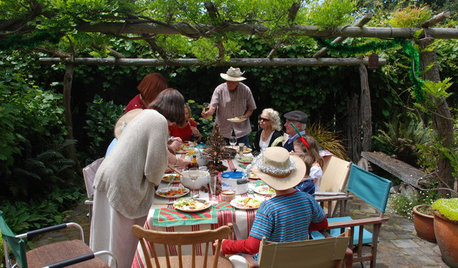

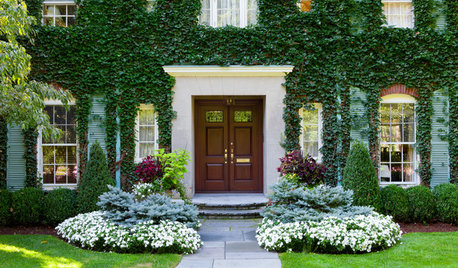


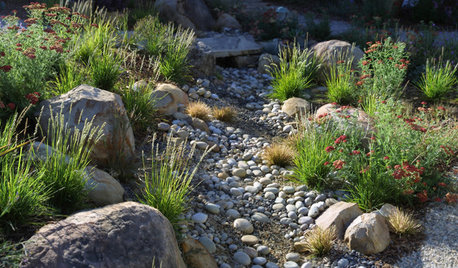
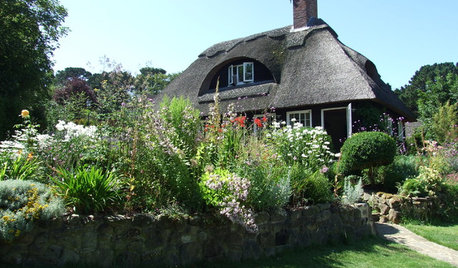
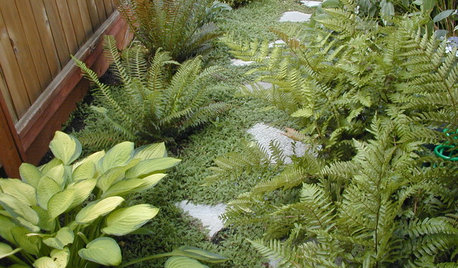






Iris GW